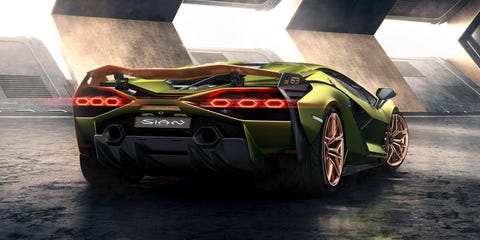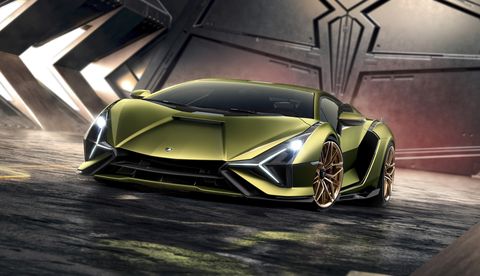Lamborghini Sián Kicks Off Lambo’s Hybrid Era with 807 HP and a 218-MPH Top Speed

After eight years, the Lamborghini Aventador isn’t done shocking the world with its jagged-edge design and flame-throwing exhaust. Like the Veneno and Centenario, the new Sián is a hypercar built off a heavily-modified Aventador—only now, it’s a hybrid.
That the Sián’s electric motor contributes but 34 horsepower to an 807-hp powertrain is the one puzzling stat. What, exactly, would anyone gain when the 6.5-liter V-12 is pushing 774 hp—15 more than the Aventador SVJ—the most ever from a Lambo engine? The engineers claim quicker midrange acceleration, better response between shifts, additional torque off the line up to 81 mph, and the convenience of parking a Lambo without the V-12 engine sputtering and begging the driver to launch out of the garage. Bless the Sant’Agata team for prioritizing objectives in their first-ever hybrid project. Engineers working on the first Honda Insight no doubt had similar wants and needs.

